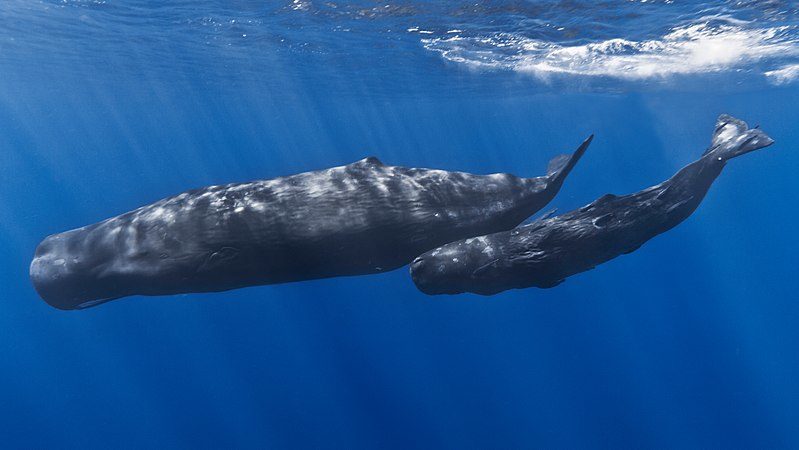
Sperm Whale Facts
- The Sperm Whale constitutes the largest known species of toothed whale. It seems most numerous around the equator, and at the edges of ice packs in both hemispheres.
- The Sperm Whale also lives as a migratory cetacean. However, its migratory patterns remain less understood than most other baleen whales.
- For centuries, men hunted the animal, yet despite this, unlike many other species of whale, its population remains rather extensive.
- Exact estimates cannot be made, therefore, only extrapolations available. These put its extant numbers anywhere between 200,000 and 1.5 million individuals.
Related Articles



Sperm Whale Physical Description
You can easily distinguish and recognize the Sperm Whale by its extremely large head, relative to body length. Varying among individuals, the head represents between 25-35 percent of the entire body length.
This species also displays the greatest degree of sexual dimorphism of any known cetacean. An adult male Sperm Whale sometimes reaches 52 ft (16 m) in length and averages roughly 90,000 lb (40,823 kg) in weight.
The significantly smaller females attain a length of around 36 ft (11 m) and weigh about 30,000 lb (13,607 kg).
In color, the Sperm Whale predominantly displays a rather dark gray, and small white patches occasionally present themselves.
- Kingdom: Animalia
- Phylum: Chordata
- Class: Mammalia
- Order: Artiodactyla
- Family: Physeteridae
- Genus: Physeter
- Species: P. macrocephalus

Sperm Whale Distribution, Habitat, and Ecology
In general, the Sperm Whale prefers to inhabit regions with a water depth of at least 1968 ft (600 m), and typically much greater. It also appears to inhabit virtually all oceans.
Individuals also rarely inhabit areas with a depth of less than 984 ft (300 m).
The genders appear to prefer different depths, with the females going for shallower waters of roughly 3,280 ft (1,000 m), while the males prefer it rather deeper.
In addition, both genders have the ability to stay submerged for between 35-60 minutes, before returning to the surface for air.
The mammal also primarily feeds on the larger species that share its deeper habitat. Therefore, the majority of the prey consists of skates, sharks, squids, and larger fish.
Species Sharing Its Range



Check out our other articles on 5 Fabulous Gulf of Mexico Fish, Striped Possum, Kangaroo Island, Heartleaf Foamflower, Eurasian Griffin Vulture, Executioner Wasp, Hermann’s Tortoise










How close to the NSW coastline do sperm whales generally travel and when??
Hello Greg,
Thank you for your question. There is no simple answer to it, however. This species typically stays in deeper waters, measuring at least 200 meters in depth. But the angle of the underlying ocean floor varies in all locations, of course, so the actual distance from shore likewise varies. However, and unfortunately, this species also ranks as one of the most common among those whales that strand themselves onshore in this region.
We hope this helps!
Sincerely,
OBP
When I hear the information about their brains, it is horrifying to think what they may have experienced when being hunted and killed.
Hello Jennifer,
We could not agree more. One can only hope that someday man learns to be more truly humane.
Sincerely,
OBP